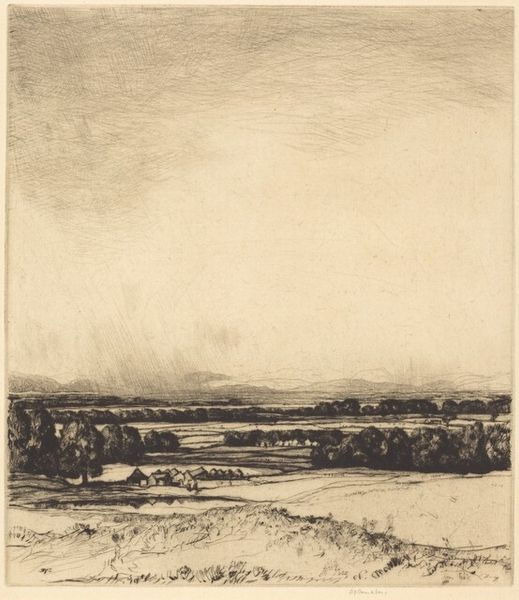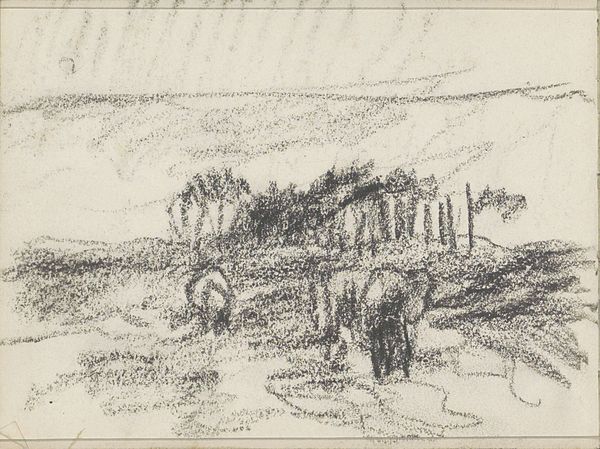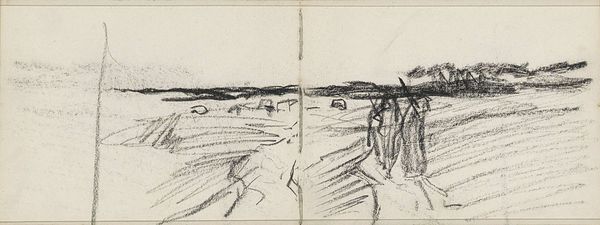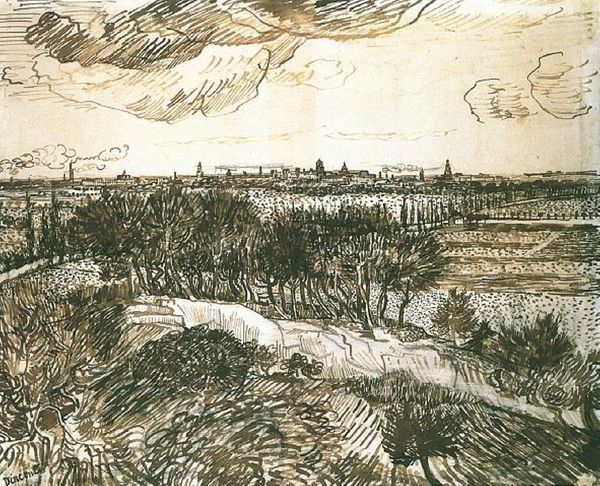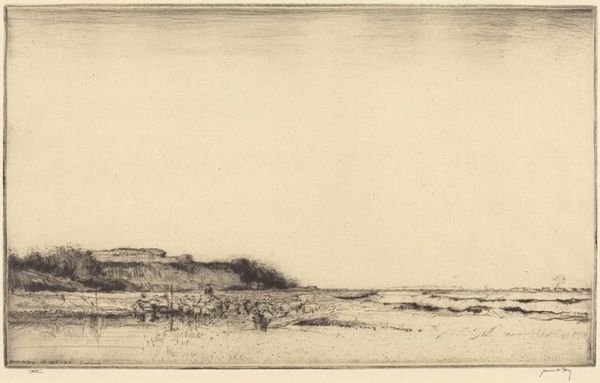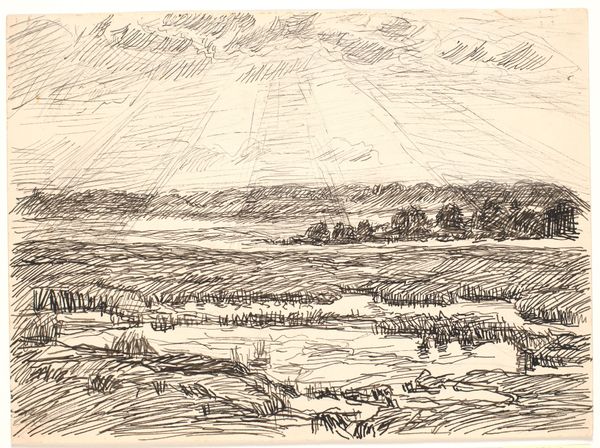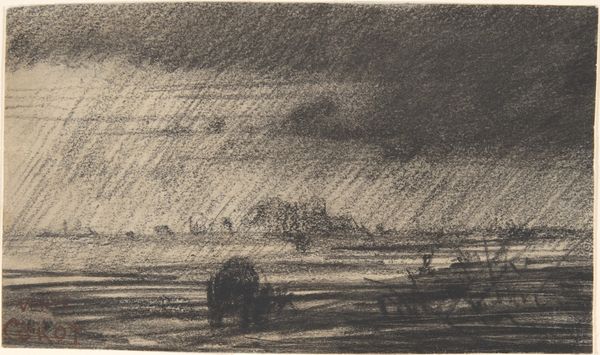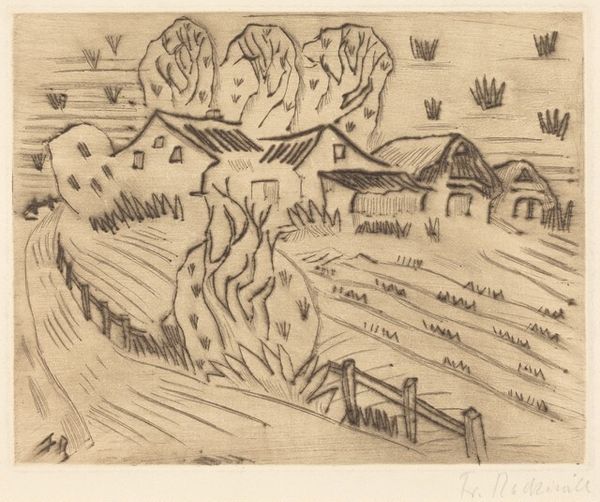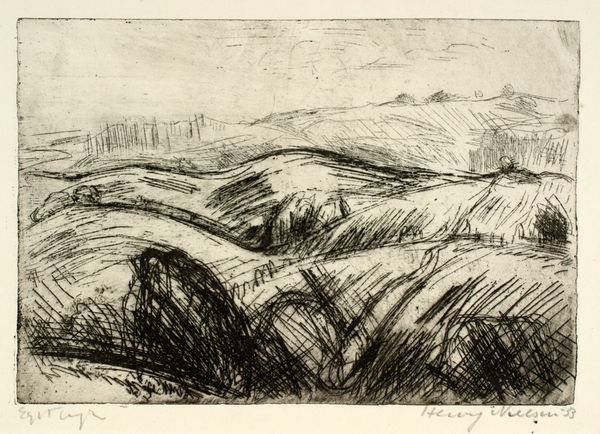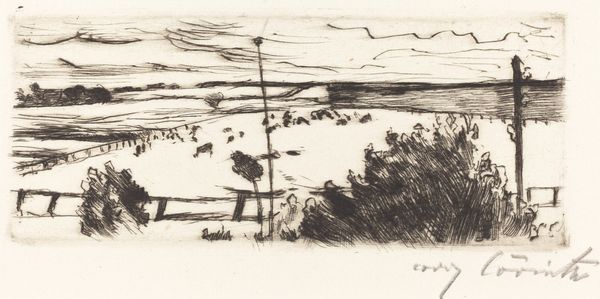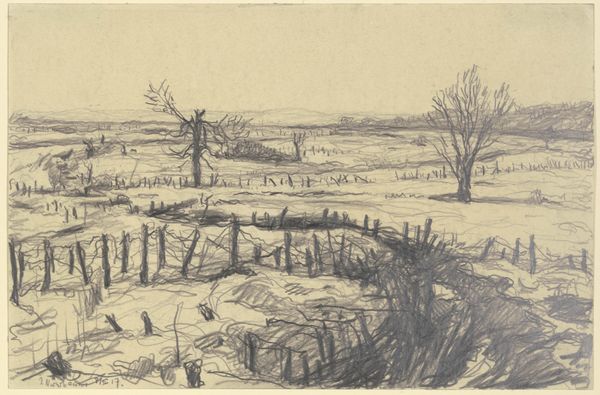
print, etching
#
ink drawing
# print
#
etching
#
landscape
#
realism
Copyright: National Gallery of Art: CC0 1.0
Curator: Before us we have David Young Cameron's etching "Near Droxford," created in 1902. The print offers a muted palette depicting an open landscape just touched by signs of civilization. What springs to mind for you when you look at it? Editor: Bleak beauty, perhaps? There's an interesting stillness. I am immediately drawn to the dark rain cloud hanging above a distant town—like a threat, or perhaps a cleansing force. Curator: Interesting point. Cameron was known for his architectural and landscape etchings. The technique of etching, of course, gives such detail to the sky and fields. Do you see any other symbolic features within the setting? Editor: The village on the horizon. It is the main human intervention in what would be wilderness. Those clusters of roofs—protective, offering shelter not just from the elements but also from spiritual turmoil. Notice the bare, rolling landscape seems to echo the turbulent feelings that cloud overhead implies. There is that old tension between dwelling and wandering... Curator: That contrast speaks so directly to how humans experience nature—trying to find both comfort and meaning. I find something so quintessentially English about the work, the muted palette so perfectly evoking the country. What lingers for you about this particular print, as we finish? Editor: The church tower at the lower end—the small village as a reminder of enduring values, a beacon through shifting times, perhaps. A potent symbol, subtly placed. The artist makes you search for it, too. Curator: A compelling thought—one which draws everything else into deeper resonance. Thank you for bringing it to our attention.
Comments
No comments
Be the first to comment and join the conversation on the ultimate creative platform.
